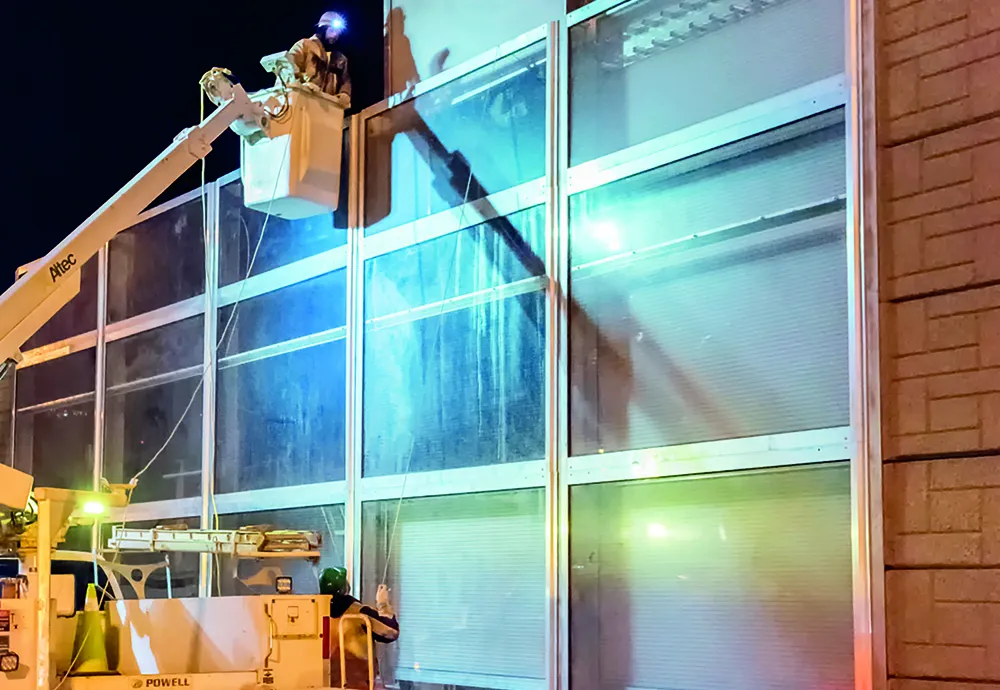The Ministry of Transportation (MTO) in Ontario, Canada, where collisions with wild animals cost the province more than US$95 million annually, has installed wildlife sensor and alert systems to reduce the number of animal-vehicle collisions on its highways.
The MTO has installed two types of systems – one uses laser tripwires to detect animals and the other uses radar, an alternative that was found to address some of the challenges posed by laser systems.
Neither system has yet been determined to be
August 29, 2013
Read time: 3 mins
The Ministry of Transportation (MTO) in Ontario, Canada, where collisions with wild animals cost the province more than US$95 million annually, has installed wildlife sensor and alert systems to reduce the number of animal-vehicle collisions on its highways.
The MTO has installed two types of systems – one uses laser tripwires to detect animals and the other uses radar, an alternative that was found to address some of the challenges posed by laser systems.
Neither system has yet been determined to be superior to the other. The ministry will continue testing to determine which method works better. Officials report, however, that both systems slow down traffic, and initial results point to fewer collisions overall.
Powered by solar panels and backup batteries, laser tripwire systems were installed in 2009 and 2012 in two areas where wildlife is often encountered on roads. If the system is triggered, yellow lights flash to alert motorists that wildlife is within approximately one mile of the sensor. In the five years before the first system was installed, that area saw eleven collisions, but in the four years since, only one collision has been reported.
Despite the reduction in collisions, project leaders reported some challenges with the technology which can be easily triggered by false alarms, including small animals, rain, or vegetation. While the sensors can be adjusted, operators found it impossible to eliminate false triggers while making sure that large animals are still detected.
The MTO will continue evaluating the effectiveness of the systems, according to MTO spokesperson Bob Nichols.
In March 2012, the MTO installed the Large Animal Warning and Detection System (LAWDS) which uses radar to detect large animals. The system also provides operators with a map of the road, updated once per second, indicating where the animal was detected. In addition to addressing many of the problems caused by laser tripwires, the system also gives operators traffic information, such as speed and volume, or even whether a vehicle is a car or truck.
Initial results from the radar system show that traffic speed is reduced by 15 percent when the system is active.
For both systems, the MTO partnered with the Ontario Provincial Police and though no definite conclusions have been reported by the MTO, police believe the systems are making a difference, Nichols said.
Similar systems are also being tested around the US.
The MTO has installed two types of systems – one uses laser tripwires to detect animals and the other uses radar, an alternative that was found to address some of the challenges posed by laser systems.
Neither system has yet been determined to be superior to the other. The ministry will continue testing to determine which method works better. Officials report, however, that both systems slow down traffic, and initial results point to fewer collisions overall.
Powered by solar panels and backup batteries, laser tripwire systems were installed in 2009 and 2012 in two areas where wildlife is often encountered on roads. If the system is triggered, yellow lights flash to alert motorists that wildlife is within approximately one mile of the sensor. In the five years before the first system was installed, that area saw eleven collisions, but in the four years since, only one collision has been reported.
Despite the reduction in collisions, project leaders reported some challenges with the technology which can be easily triggered by false alarms, including small animals, rain, or vegetation. While the sensors can be adjusted, operators found it impossible to eliminate false triggers while making sure that large animals are still detected.
The MTO will continue evaluating the effectiveness of the systems, according to MTO spokesperson Bob Nichols.
In March 2012, the MTO installed the Large Animal Warning and Detection System (LAWDS) which uses radar to detect large animals. The system also provides operators with a map of the road, updated once per second, indicating where the animal was detected. In addition to addressing many of the problems caused by laser tripwires, the system also gives operators traffic information, such as speed and volume, or even whether a vehicle is a car or truck.
Initial results from the radar system show that traffic speed is reduced by 15 percent when the system is active.
For both systems, the MTO partnered with the Ontario Provincial Police and though no definite conclusions have been reported by the MTO, police believe the systems are making a difference, Nichols said.
Similar systems are also being tested around the US.







